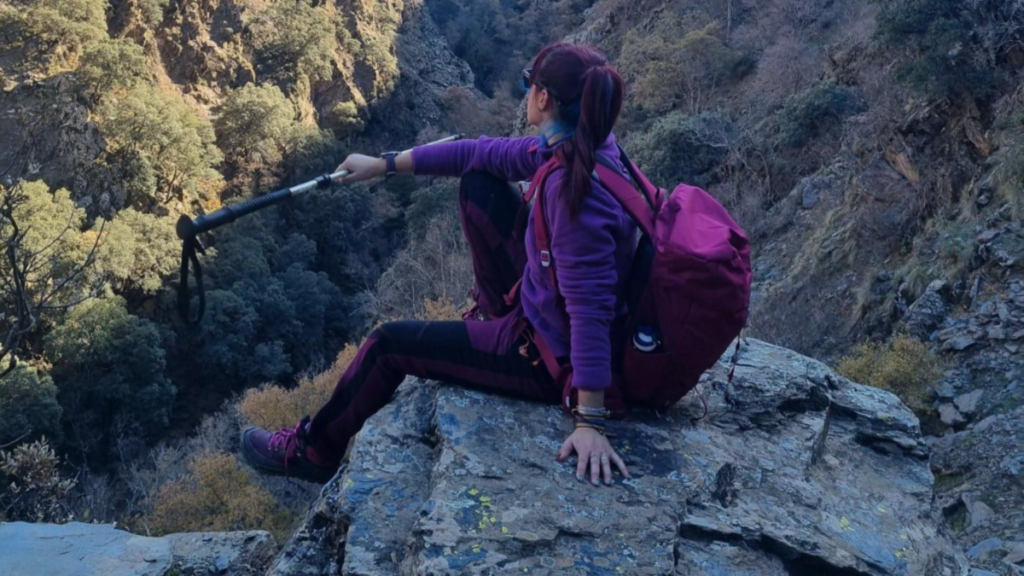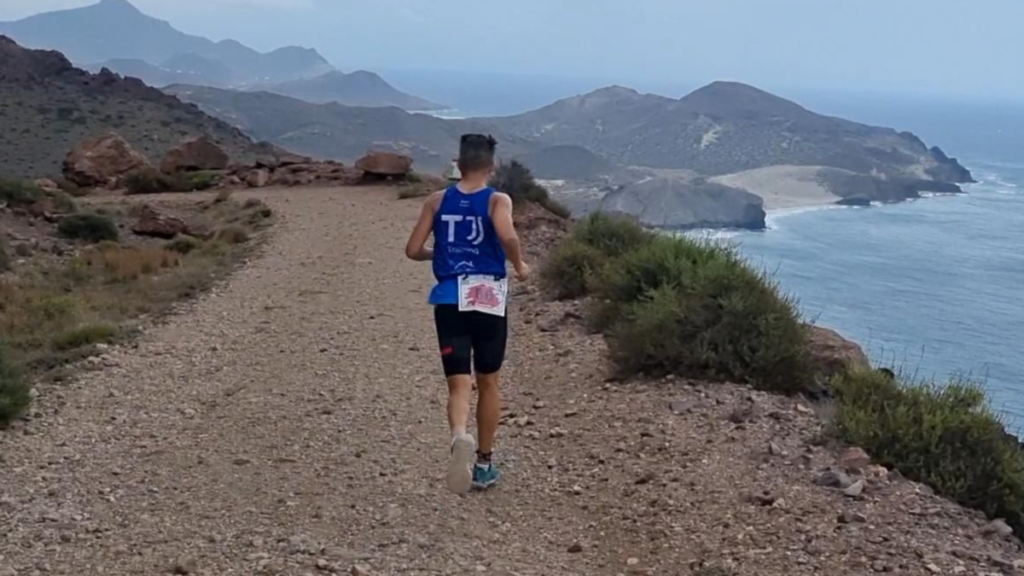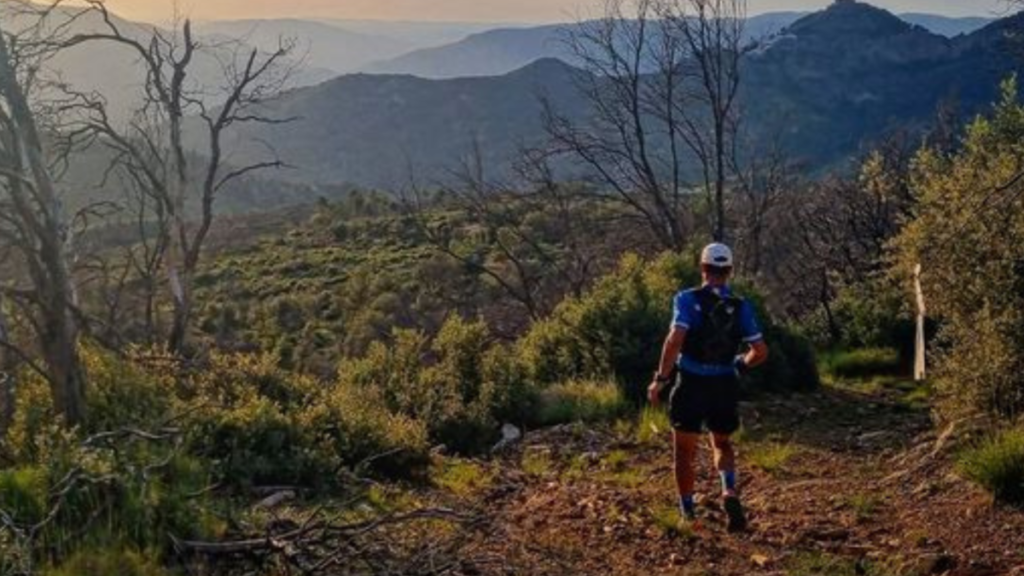
Just about every time I line up for a marathon or half marathon and happen to mention being a trail runner and doing nearly all of my training on the trails, I am met with a chorus of runners talking about how dangerous it is and how expensive trail running equipment is – not to mention the all too common notion that running trails is inherently riskier in terms of injury.
A common trail running myth is that it is the reserved domain of elite or experienced athletes. Another misconception is that trail running requires expensive gear and specialized equipment. Equally untrue is the belief that trail running is solely about cardio, or that it has higher injury risk.
Let’s take a closer look at both these myths about trail running as well as others, and systematically debunk each of them.
Debunking Trail Running Myths
Trail running has long been shrouded in misconceptions, with many believing it’s an activity reserved for the elite or experienced athletes. However, the reality is far from this myth. Trail running is a sport that welcomes individuals of all levels, from beginners to seasoned pros. The aim of this post is to debunk these myths and provide evidence-based insights to showcase the inclusivity and accessibility of trail running.
One common misconception is that trail running requires expensive gear and specialized equipment. In truth, all you need is a good pair of trail running shoes and a sense of adventure to get started. Another myth is that trail running is solely about cardio, neglecting the mental and emotional benefits it offers. By addressing these misconceptions and highlighting the diverse benefits of trail running, we aim to encourage more people to lace up their shoes and hit the trails, regardless of their experience level.
Trail Running Isn’t Just for the Elite
Trail running isn’t just for the elite. Despite the misconception that it’s reserved for experienced athletes, the reality is quite the opposite. Trail running is a welcoming sport that caters to individuals of all levels, from beginners taking their first steps on the trails to seasoned runners seeking new challenges. The inclusivity and accessibility of trails make it a sport that anyone can enjoy, regardless of their background or experience.
By debunking the myth that trail running is exclusive to elite athletes, we aim to encourage more people to explore the beauty of nature through this invigorating activity. Whether you’re looking to start a new fitness journey or simply enjoy the outdoors in a different way, trail running offers a unique experience that is open to everyone. So lace up your shoes, hit the trails, and discover the joy of trail running for yourself.
You Don’t Need Expensive Gear to Start
While some may believe that trail running demands expensive gear to start, the reality is quite different. You don’t need to break the bank to enjoy this invigorating activity. There are budget-friendly options available for essential gear that can get you started on the trails without draining your wallet.

One key piece of gear for trail running is a good pair of trail running shoes. Look for durable yet affordable options that provide traction and support on varied terrain. Additionally, investing in moisture-wicking clothing can help keep you comfortable during your runs without splurging on high-end brands.
For hydration on the trails, consider a budget-friendly hydration pack or handheld water bottle. These options can keep you hydrated without the need for expensive hydration vests. Lastly, a basic GPS watch or smartphone app can help track your progress and ensure you stay on course without the need for a costly GPS device.
By exploring cost-effective gear alternatives, you can debunk the myth that trail running is only accessible to those with expensive equipment. With the right mindset and a few essential items, you can hit the trails and experience the joys of trail running without breaking the bank.
Trail Running is More Than Just Cardio
Trail running offers a myriad of physical and mental benefits beyond just improving cardiovascular health. While it does provide an excellent cardio workout, it also engages various muscle groups, enhancing overall strength and endurance. The uneven terrain of trails requires more stability and balance, leading to a full-body workout that can help prevent injuries and improve agility.
Moreover, trail running is a great way to connect with nature and reduce stress levels. The peaceful surroundings and fresh air can have a calming effect on the mind, promoting mental clarity and well-being. Many trail runners find that being in nature boosts their mood and provides a sense of tranquility that is hard to replicate in a gym setting.
By debunking the myth that trail running is solely focused on cardio, we can emphasize its holistic benefits for both the body and mind. It’s not just about getting your heart rate up; it’s about embracing a well-rounded activity that nourishes both physical and mental wellness.
Safety First: Addressing Concerns About Terrain and Wildlife
Trail running enthusiasts must prioritize safety when hitting the trails, especially when navigating diverse terrains and encountering wildlife. To ensure a secure and enjoyable experience, consider these practical tips. When tackling rugged paths, choose appropriate footwear with good traction to prevent slips and falls. It’s also essential to maintain a steady pace and focus on your surroundings to react quickly to changes in terrain.
When it comes to wildlife encounters, educate yourself on the local fauna and their behaviors. Make noise while running to alert animals of your presence and avoid surprising them. Carry bear spray or other deterrents if running in areas known for wildlife sightings. Additionally, running with a buddy can enhance safety, providing support in case of emergencies.
By being prepared and aware of your surroundings, you can mitigate risks and fully enjoy the beauty of trail running. Remember, safety should always come first to ensure a positive and secure trail running experience.
The Myth of Trail Running as a Solitary Pursuit
Trail running is often perceived as a solitary pursuit, but in reality, it offers a vibrant social experience that brings together like-minded individuals. One of the joys of trail running is the opportunity to join group runs, where runners of all levels can come together to explore nature, challenge themselves, and build camaraderie. These group-runs not only provide motivation and support but also create a sense of community among trail runners.
Moreover, the digital age has made it easier than ever to connect with fellow trail enthusiasts through online communities and social media platforms. These virtual spaces allow runners to share tips, experiences, and encouragement, fostering a sense of belonging and camaraderie even when running solo on the trails.
By debunking the myth of trail running as a solitary pursuit, we can highlight the social benefits and sense of community that this sport offers. Whether you prefer the company of others or enjoy the solitude of nature, trail running has something to offer for everyone, making it a truly inclusive and enriching experience.
Trail Running is Not Just for Mountain Dwellers
Trail running is a versatile activity that extends beyond mountainous terrains. Contrary to the common belief that it is exclusive to mountain dwellers, trail running offers a diverse range of options in urban and suburban settings. Urban trails, often nestled within city parks or along riverbanks, provide convenient access to nature within metropolitan areas. These trails offer a refreshing escape from the hustle and bustle of city life, allowing runners to reconnect with the outdoors without venturing far from home.

Suburban trails, on the other hand, offer a mix of natural landscapes and residential surroundings, making them ideal for those seeking a balance between nature and convenience. These trails cater to a wide range of runners, from beginners to seasoned athletes, providing a welcoming environment for all skill levels.
By debunking the myth that trail running is reserved for mountain dwellers, we can encourage individuals from all backgrounds to explore the diverse trail options available in their local communities. Whether you prefer the serenity of wooded paths or the energy of urban trails, trail running offers something for everyone, regardless of where they call home.
It’s Okay to Walk: Debunking the Speed Myth
Trail running isn’t just about speed; it’s about enjoying the journey and listening to your body. Normalizing walking during trail runs is essential for maintaining a sustainable pace and preventing burnout. By debunking the speed myth, we can shift the focus towards the overall experience rather than just how fast you can go. Emphasizing the importance of pacing allows runners to conserve energy, tackle challenging terrains more effectively, and reduce the risk of injuries.
Walking during a trail run doesn’t signify weakness; it showcases wisdom in adapting to the demands of the terrain and your body’s needs. It’s a strategic approach that can enhance your overall performance and enjoyment of the sport. By incorporating walking intervals, runners can maintain a steady pace, conquer longer distances, and explore new trails without feeling pressured to constantly run at top speed.
Remember, trail running is a personal journey that should be tailored to your individual capabilities and preferences. So, next time you hit the trails, embrace the idea that it’s okay to walk – it’s all part of the trail running experience.
Trail Running is Safe for Joints and Bones
Trail running is often perceived as more damaging to joints and bones compared to road running. However, this myth is not entirely accurate. Studies and expert opinions have shown that the impact forces experienced during trail running are distributed differently than on hard surfaces, potentially reducing the risk of repetitive stress injuries. The varied terrain of trails can actually help strengthen muscles, tendons, and ligaments, providing a more well-rounded workout that supports joint health.
Experts emphasize the importance of proper footwear and technique in mitigating any potential risks associated with trail running. Investing in trail-specific shoes with adequate cushioning and support can help absorb shock and reduce strain on joints. Additionally, focusing on maintaining good running form and gradually increasing mileage can further minimize the impact on bones and joints.
By debunking the misconception that trail running is inherently harmful to joints and bones, individuals can feel more confident in exploring the trails and reaping the numerous physical and mental benefits that this outdoor activity offers.
The Myth of Inaccessibility: Finding Trails Near You
Challenging the misconception that access to trails is limited, there are numerous resources and tips available for finding nearby trails. One effective way to discover trails in your area is by utilizing online platforms and apps dedicated to trail running. Websites like Trail Run Project and AllTrails offer comprehensive databases of trails, complete with user reviews, difficulty ratings, and trail maps. These platforms make it easy to search for trails based on location, distance, elevation gain, and other preferences, ensuring that runners of all levels can find suitable options.
Local running clubs and outdoor stores can also be valuable sources of information when seeking nearby trails. These communities often organize group runs on various trails, providing an opportunity to connect with fellow trail runners and discover new routes. Additionally, reaching out to park rangers or conservation organizations can offer insights into lesser-known trails and hidden gems in your area.
By leveraging these resources and tips, trail runners can debunk the myth of inaccessibility and access a wealth of trails waiting to be explored right in their own backyard.
Weathering the Elements: Trail Running in All Conditions
When it comes to trail running, being prepared to face various weather conditions is essential for a successful and enjoyable experience. Contrary to the misconception that trail running is only for fair weather, with the right strategies, runners can tackle any conditions they may encounter.
For rainy days, investing in waterproof gear such as jackets, pants, and shoes can keep you dry and comfortable throughout your run. Additionally, wearing moisture-wicking clothing underneath can help regulate body temperature and prevent chafing. Embracing the rain can also add a refreshing element to your trail running routine.
In hot weather, hydration is key. Carrying a water bottle or hydration pack is crucial to prevent dehydration, especially on longer runs. Wearing lightweight, breathable clothing and a hat can help protect you from the sun while allowing your body to cool down efficiently.
During winter months, trail runners can opt for trail shoes with better traction to navigate snowy or icy paths safely. Layering up with moisture-wicking base layers, insulating mid-layers, and windproof outer layers can help you stay warm without overheating.
By adapting your gear and approach to different weather conditions, you can debunk the myth that trail running is limited to fair weather days and enjoy the trails year-round.
Trail Running is a Mindful Practice
Trail running goes beyond physical exercise; it is a mindful practice that offers a myriad of mental benefits. One key advantage is stress relief. The serene natural surroundings and rhythmic footfalls can help runners unwind and clear their minds, providing a much-needed escape from daily stressors. Additionally, trail running promotes mindfulness by encouraging runners to be fully present in the moment, focusing on each step and breath. This heightened awareness can lead to a sense of calm and clarity, enhancing overall mental well-being.

Moreover, trail running can serve as a form of meditation in motion. The repetitive motion and connection with nature create a meditative state that allows runners to let go of distractions and find inner peace. This mental aspect of trail running debunk the misconception that it is solely a physical activity, highlighting its holistic benefits for both the body and mind. Incorporating mindfulness into trail running can transform it into a therapeutic practice that nurtures mental health and emotional well-being.
Tailoring Trail Running for Beginners
For beginners venturing into trail running, it’s essential to start with a gradual approach to build confidence and endurance. Begin by incorporating a mix of walking and running to ease into the sport and prevent overexertion. Setting realistic goals and gradually increasing distances can help beginners track their progress effectively.
When it comes to gear, focus on essentials like proper trail shoes with good grip and moisture-wicking clothing. Hydration packs or belts are also beneficial for longer runs on the trails. Additionally, familiarize yourself with trail etiquette and safety precautions to ensure a smooth and enjoyable experience.
Consider joining a local trail running group or seeking guidance from experienced runners to learn valuable tips and techniques. Incorporating strength training and flexibility exercises into your routine can also enhance performance and reduce the risk of injuries.
Remember, trail running is a journey of self-discovery and growth. Embrace the challenges, celebrate small victories, and most importantly, enjoy the beauty of nature surrounding you as you embark on this fulfilling adventure.
Sustainability in Trail Running: Respect for Nature
Trail running enthusiasts understand the significance of environmental stewardship in preserving the natural beauty of trails. Contrary to the misconception that trail running harms natural habitats, many trail runners actively advocate for sustainability practices to minimize their impact on the environment. By following Leave No Trace principles, such as staying on designated trails, packing out trash, and respecting wildlife, trail runners can contribute to the conservation of these precious outdoor spaces.
Moreover, trail running events and organizations often prioritize eco-friendly initiatives, such as using biodegradable race materials, promoting carpooling to reduce carbon emissions, and organizing trail clean-up efforts. These efforts not only demonstrate a commitment to sustainability but also foster a sense of community responsibility among participants.
Embracing sustainability in trail running goes beyond individual actions; it reflects a collective dedication to preserving the natural world for future generations of outdoor enthusiasts. By promoting respect for nature and adopting environmentally conscious practices, trail runners can enjoy the sport while ensuring that trails remain pristine and accessible for years to come.
Trail Running Myths: Conclusion and Call to Action
Continuing the theme of debunking trail running myths, it is crucial to summarize the key points discussed throughout this article. By addressing misconceptions and encouraging readers to challenge them, we can foster a more inclusive and informed trail running community.
From debunking the belief that trail running is only for the elite to highlighting the accessibility of trails for all, it is evident that trail running is a diverse and welcoming activity. Emphasizing the importance of safety, sustainability, and mindfulness in trail running further reinforces the positive impact this sport can have on individuals and the environment.
As trail runners, it is our responsibility to not only enjoy the trails but also to protect and preserve them for future generations. By actively engaging in sustainable practices, respecting nature, and promoting a sense of community, we can ensure that trail running remains a fulfilling and enriching experience for all.
Let’s continue to challenge myths, embrace inclusivity, and advocate for the beauty of trail running. Together, we can create a community that celebrates diversity, respects nature, and thrives on the shared passion for exploring the great outdoors.
